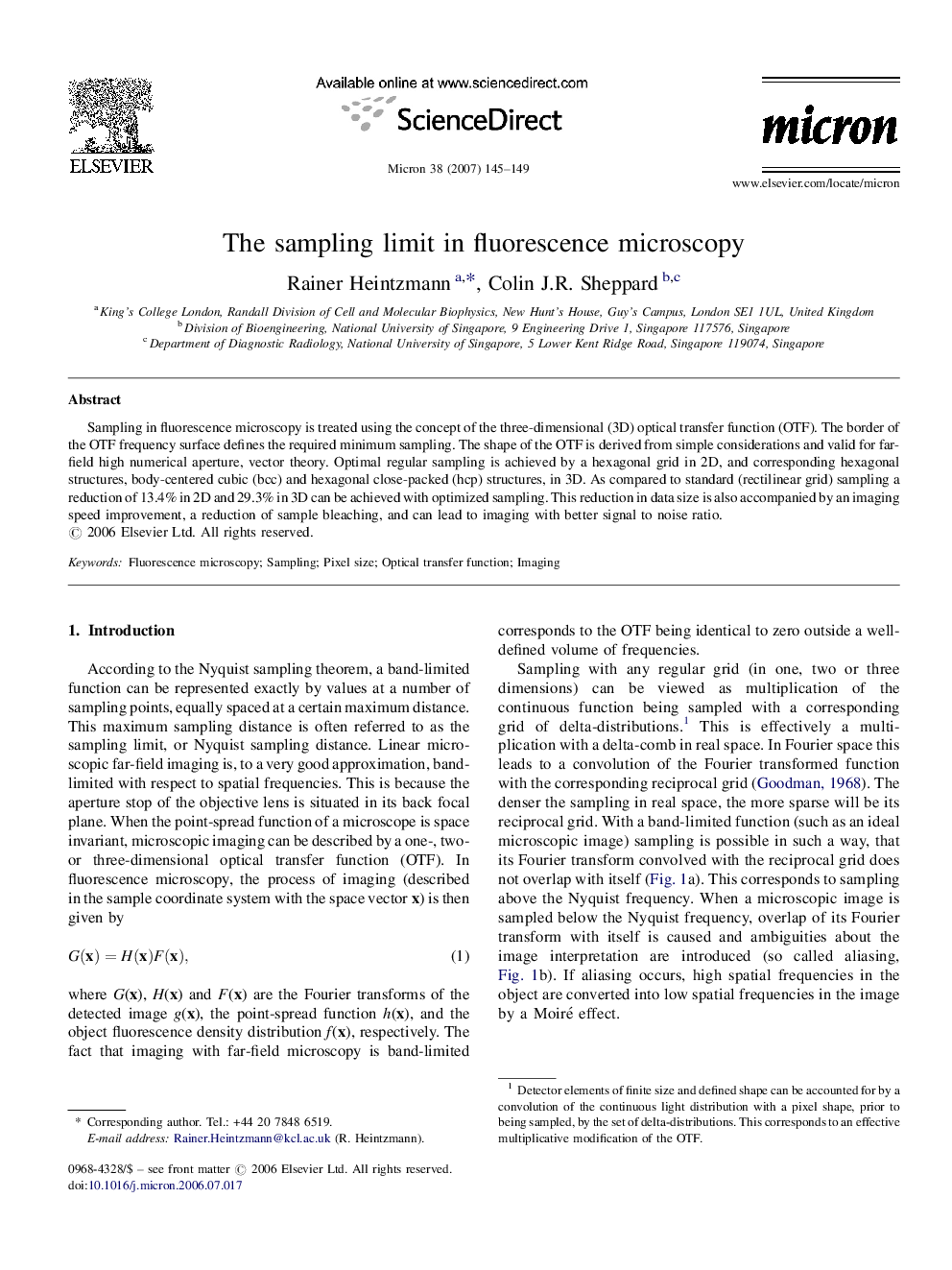| Article ID | Journal | Published Year | Pages | File Type |
|---|---|---|---|---|
| 1590225 | Micron | 2007 | 5 Pages |
Sampling in fluorescence microscopy is treated using the concept of the three-dimensional (3D) optical transfer function (OTF). The border of the OTF frequency surface defines the required minimum sampling. The shape of the OTF is derived from simple considerations and valid for far-field high numerical aperture, vector theory. Optimal regular sampling is achieved by a hexagonal grid in 2D, and corresponding hexagonal structures, body-centered cubic (bcc) and hexagonal close-packed (hcp) structures, in 3D. As compared to standard (rectilinear grid) sampling a reduction of 13.4% in 2D and 29.3% in 3D can be achieved with optimized sampling. This reduction in data size is also accompanied by an imaging speed improvement, a reduction of sample bleaching, and can lead to imaging with better signal to noise ratio.
